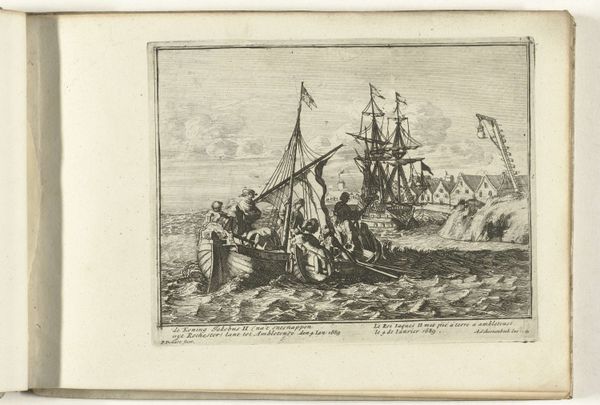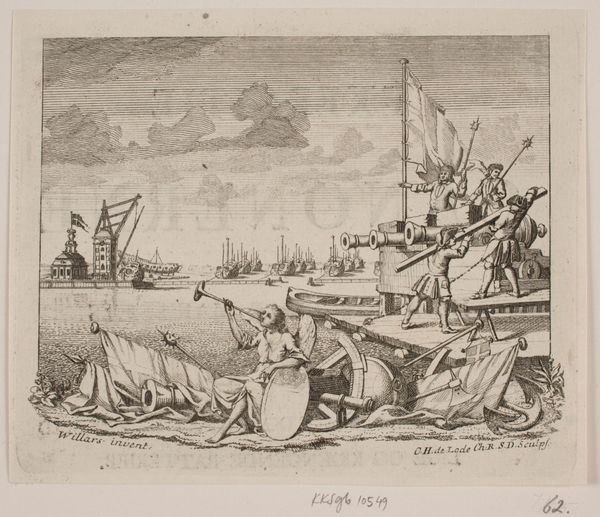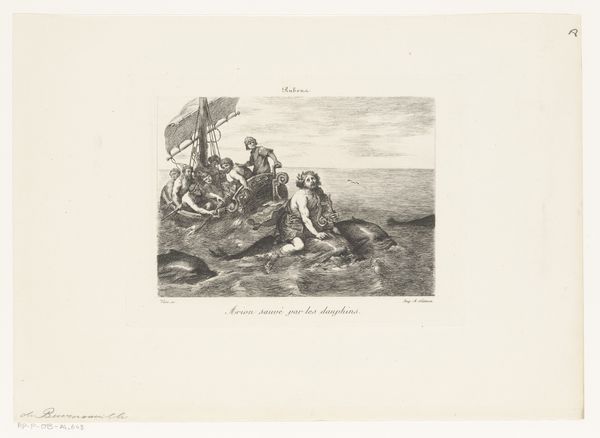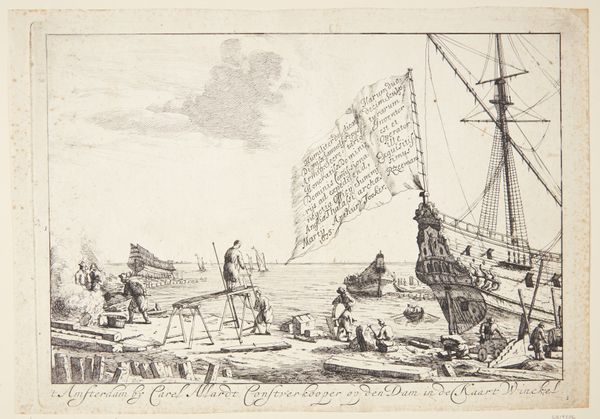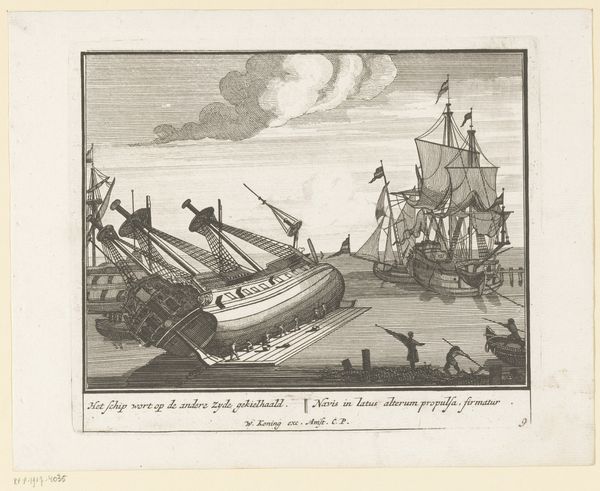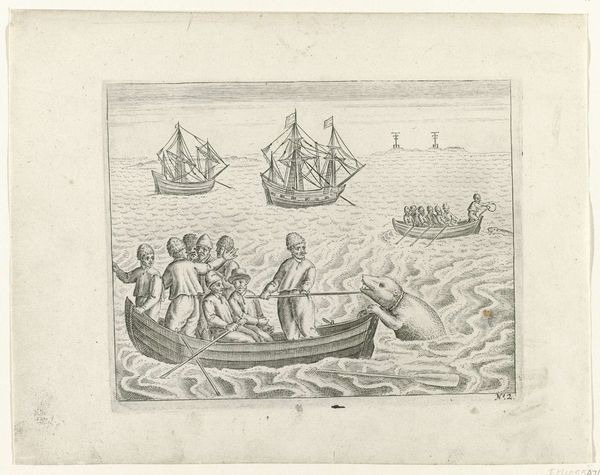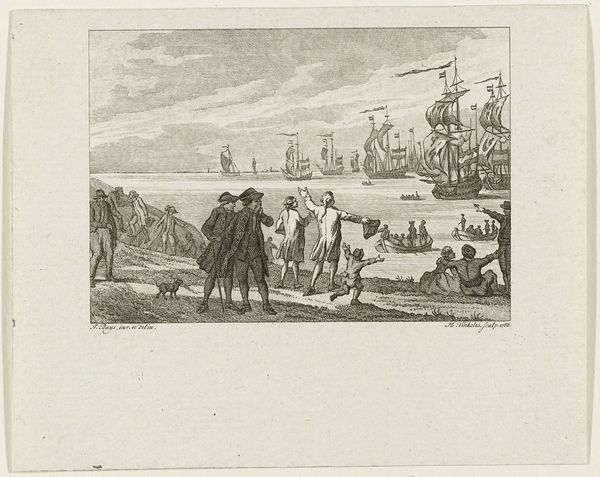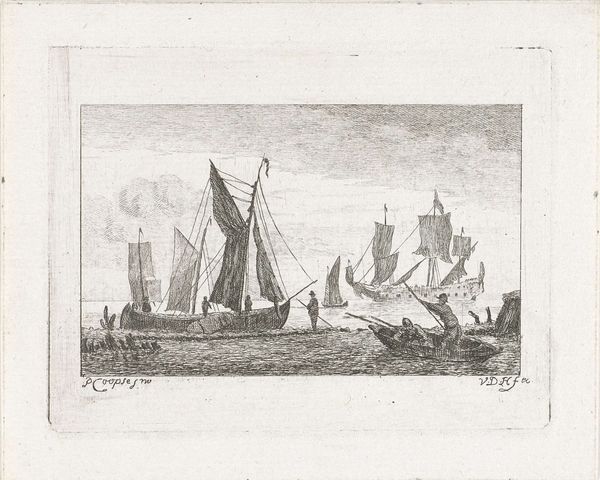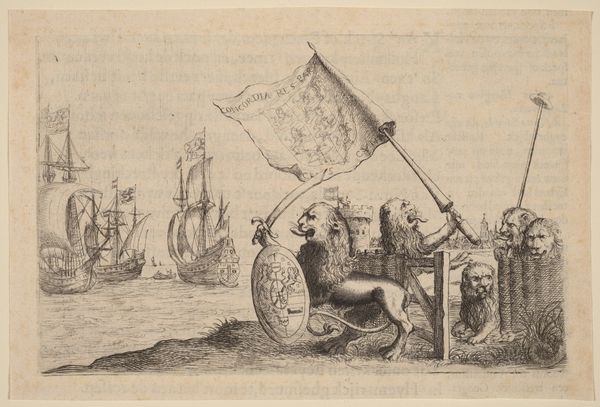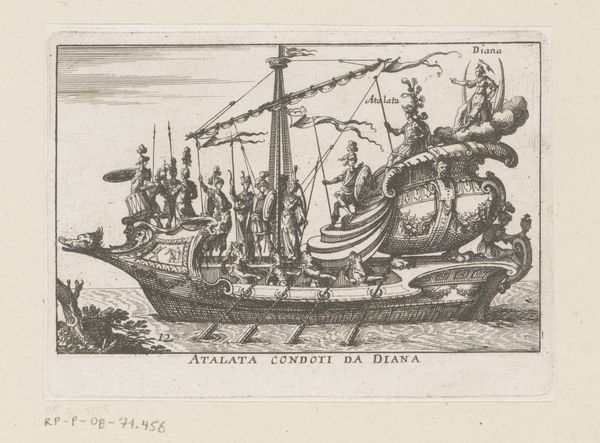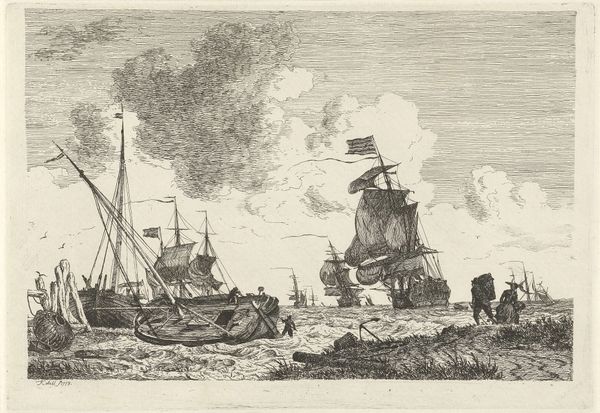
print, engraving
#
narrative-art
#
baroque
# print
#
pen sketch
#
line
#
cityscape
#
history-painting
#
engraving
#
realism
Dimensions: height 92 mm, width 114 mm
Copyright: Rijks Museum: Open Domain
Editor: We're looking at a print titled "Arrival of King James II in France, 1689," created anonymously in 1711. The Rijksmuseum houses this engraving. I notice the choppy waters and packed boats, conveying a sense of urgency or maybe even distress. What do you see in this piece that tells a broader story? Curator: This print isn't just a depiction of a historical event; it’s a carefully crafted piece of political communication. James II's arrival in France in 1689 represents a turning point in British history, leading to the Glorious Revolution and a shift in power. The artist's choice to emphasize the rough seas and crowded conditions perhaps aimed to evoke sympathy for the exiled king or critique the new political order by showing his less than regal arrival. Consider how images like this circulated and shaped public opinion. How might contemporaries have viewed it? Editor: So, beyond simply recording the event, the artist aimed to sway public perception? That’s fascinating. The style seems detailed, like realism. Was this a popular form of disseminating news or political statements at the time? Curator: Absolutely. Prints, particularly engravings, served as a primary means of distributing information and propaganda. They were relatively inexpensive to produce and could reach a wide audience. The ‘realism’ you mention isn’t merely an objective portrayal, but a constructed one designed to present a particular narrative. Did this change your interpretation of the depicted people? Editor: It does! Knowing its function as propaganda definitely makes me think differently about what's shown – less objective reality, more persuasive storytelling. Curator: Precisely. The power of art lies not just in what it depicts but in how it shapes our understanding of the world around us. Context is everything, right? Editor: This really highlights how artworks reflect, and actively participate in, their historical and cultural moment. I’ll remember to look at the motivations behind creation. Curator: That’s exactly it. Thinking about the broader impact is key.
Comments
No comments
Be the first to comment and join the conversation on the ultimate creative platform.
